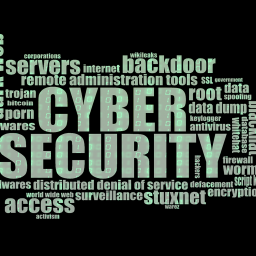
Forensic Challenges for Security Professionals
Security professionals face a multitude of challenges on a daily basis, but one that particularly stands out is the shortage of skilled cybersecurity personnel. With the current state of the workforce, the cybersecurity talent shortage coupled with the Great Resignation movement can result in significant security gaps and leave organizations exposed to various types of threats, including insider threats, hacking, and ransomware.
The shortage of cybersecurity professionals is particularly visible in the field of Digital Forensics and Incident Response (DFIR), where the talent pool in the United States alone falls short by an alarming 600,000 individuals, according to Justin Tolman, the Forensics Evangelist at Exterro.
However, digital forensics can help mitigate these challenges by providing solutions that collect evidence accurately, automate workflows, operate efficiently in Zero Trust environments, and detect and mitigate insider threats. By automating and streamlining mundane tasks, digital forensics solutions can alleviate the workload of practitioners, freeing them up to focus on more analytical work and providing them with on-the-job training opportunities.
In a recent episode of Enterprise Security Weekly, Tolman highlighted the importance of digital forensics in enhancing cybersecurity, particularly in addressing the shortage of skilled cybersecurity personnel. By leveraging digital forensics, security professionals can significantly improve their incident response capabilities, reduce the risk of security breaches, and ensure the safety and security of their organizations.
“The future of DFIR is automation,” he said. “We will always need DFIR professionals, but at a time where we have a shortage of skilled people, you want them to be able to focus on things like analysis.” In that respect, he added, “automation eliminates the mundane.”
Tolman and Enterprise Security Weekly host Adrian Sanabria also talked about the essential features of digital forensics, such as defensibility, scalability, and accuracy. Exterro analyst Tim Rollins described such factors in a recent blog post as follows:
Data defensibility
In a forensic investigation, data defensibility is a crucial element that serves as the handoff from IT investigators to legal teams who will utilize digital evidence in court. To be admissible under the law, data from an investigation must be defensible. Teams must be able to prove that the data they started with during an investigation is the exact same data they ended with. Failure to do so can render the evidence inadmissible in court.
To ensure defensibility, investigators must establish a clear chain of custody that demonstrates that the data presented has not been altered in transit. This means ensuring that the data has not been tampered with or compromised by human error, reviewer bias, or malicious interference. To achieve this, forensic toolsets should include checks throughout the process, including low-level imaging of an endpoint, to confirm that nothing has been changed.
By taking steps to ensure data defensibility, investigators can avoid potential challenges to their evidence in court. The legal system places a high premium on data defensibility, and failing to demonstrate it can have severe consequences. Therefore, investigators must take every possible measure to ensure the integrity of their evidence, from the initial collection process to the eventual presentation in court.
Tolman and Enterprise Security Weekly host Adrian Sanabria also talked about the essential features of digital forensics, such as defensibility, scalability, and accuracy. Exterro analyst Tim Rollins described such factors in a recent blog post as follows:
Scalability
Scalability is an essential attribute for any cybersecurity toolset, particularly in mid-sized and large organizations where the number of endpoints can be overwhelming. Without high-capacity tools, it is impossible to manually manage all potential threat vectors on each endpoint. As a result, it is crucial to have tools that can scale to allow for analysis of all endpoints affected by a threat with a single click.
In a modern cybersecurity landscape, the volume and complexity of threats are constantly increasing. Therefore, it is essential to have a toolset that can scale to cover all endpoints efficiently. High-capacity tools can help manage these threats effectively by quickly identifying vulnerabilities and mitigating them before they can be exploited.
Moreover, scalability not only enables better threat management but also ensures a more efficient use of resources. By scaling up, organizations can optimize their security operations and allocate their resources effectively. This approach helps save time and money, allowing organizations to focus on other critical areas of their business.
The ability to scale is not only important for managing threats but also for accommodating changes within an organization. For instance, when a company expands, it requires a cybersecurity toolset that can grow and adapt to the increased workload effectively. Similarly, when a company downsizes, the toolset should be flexible enough to adjust accordingly.
Accuracy
While digital forensics tools may have a variety of features, these features are ultimately meaningless if organizations lack confidence in the accuracy of their forensic investigations. In the fast-paced world of cybersecurity, time is of the essence, and IT professionals must be certain they are looking at the correct information. Therefore, choosing a tool with a demonstrated track record of minimal false positives is critical.
False positives occur when a tool incorrectly identifies something as a threat when it is not. This can lead to wasted time and resources, as IT professionals may spend valuable time investigating a false positive rather than a genuine threat. False positives can also undermine confidence in the accuracy of the tool, leading to hesitation or reluctance to use it in future investigations.
A digital forensics tool that has a proven track record of minimal false positives over a substantial period is crucial. This means that the tool has been tested and validated in real-world scenarios, demonstrating its effectiveness in accurately identifying genuine threats. This validation provides assurance to organizations that the tool will perform as expected when it matters most.
Furthermore, it is essential to keep in mind that accuracy is not the only factor to consider when choosing a digital forensics tool. The tool’s user interface, ease of use, and compatibility with existing systems are all critical factors to consider. However, accuracy should always be a top priority.

















